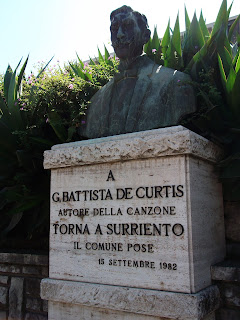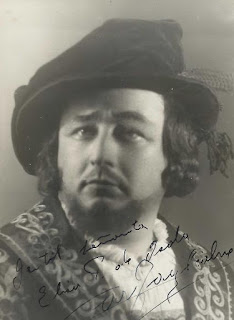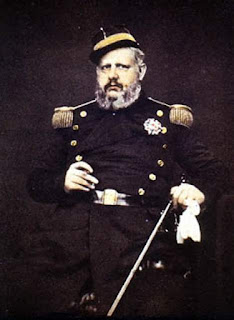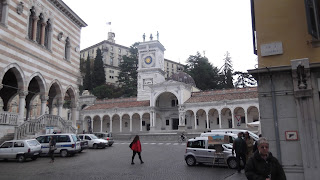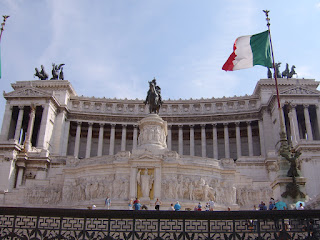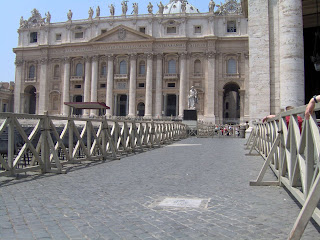AC Milan manager's tactics revolutionised football in Italy
 |
| Arrigo Sacchi, former coach of AC Milan who led Italy to 1994 World Cup final |
Unusually among top coaches, Sacchi never played football as a professional. Aware of his limited ability, he quickly decided he would concentrate instead on becoming a manager, taking charge of a local amateur team, Baracca Lugo, when he was just 26.
Literally, he worked his way up from the bottom, making a living as a shoe salesman while training his players in his spare time.
Yet step by step he ascended to the very top of the game, landing jobs on the coaching staffs at Cesena, Rimini and Fiorentina before Parma, then in the third tier of the Italian football pyramid, made him head coach in 1985.
He won promotion to Serie B in his first season and finished only three points short of promotion to Serie A in his second year, when Parma also pulled off one of the biggest upsets of the season, knocking AC Milan out of the Coppa Italia, which is Italy's equivalent of England's FA Cup.
Silvio Berlusconi, the media mogul and former Prime Minister who still owns AC Milan, was so impressed he invited Sacchi to become Milan's manager from the start of the 1987-88 season.
Despite much scepticism in Italy's football press, many of whom believed that a man who had never played above amateur level could not possibly coach a team of Milan's standing, the appointment was a massive success. The rossoneri were Serie A champions for the first time in nine years in Sacchi's first season, after which they won the European Cup in 1989 and 1990.
In four years at San Siro he won eight trophies, a record worthy of enormous respect in any circumstances. What was even more impressive was that he achieved this success while breaking the mould as far as Italian football was concerned.
More reading:
The game in Italy had become ultra defensive, teams opting for stifling tactics designed solely to avoid defeat. Yet Sacchi, inspired as a young man by the great attacking teams of Honved and Real Madrid in the club competitions and by the football played by Brazil and The Netherlands at international level, wanted Milan to be more like them.
He trained his players to be adept in every position, so that forwards could defend and defenders could attack, and introduced a high-tempo, pressing style. He turned Milan into one of the most exciting teams to watch, built around the brilliance of three Dutch players, Frank Rijkaard, Marco van Basten and Ruud Gullit.
In the first of the two European Cup triumphs, Milan beat Real Madrid 6-1 on aggregate in the semi-finals, which was seen as a symbolic moment in their development, before trouncing Steaua Bucharest 4-0 in the final, with Gullit and Van Basten scoring two goals each.
 |
| Roberto Baggio bows his head after his miss in the penalty shoot-out handed the 1994 World Cup to Brazil |
Sacchi might also have won the World Cup had Roberto Baggio, exhausted and stricken with a hamstring injury, not missed the crucial kick in the penalty shoot-out that settled the 1994 final against Brazil in the United States. As it was, Sacchi had demonstrated his adaptability, tweaking his tactics to give full rein to Baggio's creative talents and inspiring from his team a performance that almost mended the heartbreak of 1990.
Throughout all this, Sacchi almost revelled in his lack of a playing pedigree, particularly in his early days at Milan when journalists openly questioned his credentials, once flooring an inquisitor with the famous reply: "I didn't realise that to become a jockey you first had to have been a horse."
 |
| The sixth century Basilica of San Vitale in Ravenna (Photo: Sailko CC BY-SA 3.0) |
Much of Fusignano's history was destroyed during World War Two, when it found itself on the front line in a major battle between allied forces and the retreating Germans. Nearby Ravenna, however, has many attractions, including the magnificent sixth century Basilica of San Vitale, the tomb of the poet Dante Alighieri in the Basilica of San Francesco, and the pretty Piazza del Popolo.
Travel tip:
On a visit to Milan, football fans can learn more about Arrigo Sacchi's success and that of all the teams in the club's 117-year history by looking round the Mondo Milan Museum, which has a large collection of historic memorabilia as well as many interactive features. It can be found within the Casa Milan, the club's new city headquarters - not to be confused with its stadium - in the Portello district of Milan. Casa Milan is generally open from 10am to 7pm. For more information, visit www.casamilan.acmilan.com/en
Home


